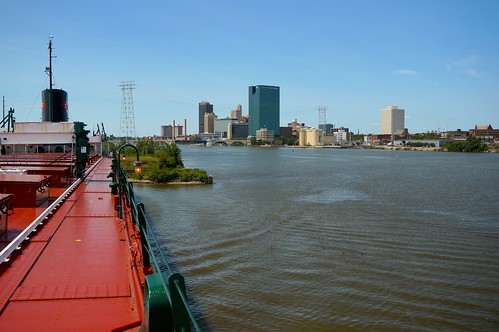
In the first wave of funding through the Regional Conservation Partnership Program (RCPP), 70 percent of the 100-plus projects focused on providing for clean and abundant water. Of these many projects, one in the Great Lakes region is poised to do an excellent job in engaging and empowering an army of partners. The Tri-State Western Lake Erie Basin Phosphorous Reduction Initiative is a multi-state project that brings together more than 40 partnering organizations from Michigan, Ohio and Indiana to reduce the runoff of phosphorous into the waterways in the western basin of Lake Erie.
The lake has suffered from nutrient pollution for years, including last year’s water crisis that left 400,000 residents in the Toledo, Ohio area without water to drink, bathe or cook. Today, Michigan Senator and Ranking Member of the Senate Committee on Agriculture, Nutrition and Forestry Debbie Stabenow and Ohio Senator Sherrod Brown visited with the many diverse organizations making this project possible. From providing clean drinking water to employing thousands of people in the tourism industry, the health of Lake Erie affects nearly every aspect of life in the region.
With RCPP, partners are in the driver’s seat with technical and financial help from NRCS. State, local and regional partners join with agricultural producers to achieve specific, measurable natural resource results.
In this case, a large group of partners told us why more conservation work was needed in the western basin of Lake Erie – and how they could do it in an innovative way that leveraged additional funds and brought a wide variety of partners to the table. This project plans to target funding to watersheds most in need, meaning the streams and rivers that have a large impact on water quality in the lake.
This new investment in the western Lake Erie watershed builds on 10 years of work done by the Western Lake Erie Basin Partnership, a group of 14 federal, state, and local government agencies and non-profit organizations. Many of these partners helped develop the RCPP proposal and will contribute both their cash and in-kind services to the project.
USDA’s Natural Resources Conservation Service administers RCPP, which directs funding to state-level and multi-state projects as well as projects in critical conservation areas. Agriculture Secretary Tom Vilsack selected eight critical conservation areas, including the Great Lakes Region. It’s so important that we protect the water quality of Lake Erie and the other Great Lakes.
America’s Great Lakes — Erie, Superior, Michigan, Huron and Ontario — hold 21 percent of the world’s surface fresh water and host habitat for a variety of fish and wildlife species of concern. They provide drinking water for more than 40 million people and economic benefits from fishing and recreation. The Great Lakes Region is also a major agricultural area, with more than 55 million acres of land under production.
With RCPP and other Farm Bill programs, USDA is working to accelerate conservation work on private lands. We look forward to the contributions this project will make to the region as well as other efforts by farmers in the regions.
